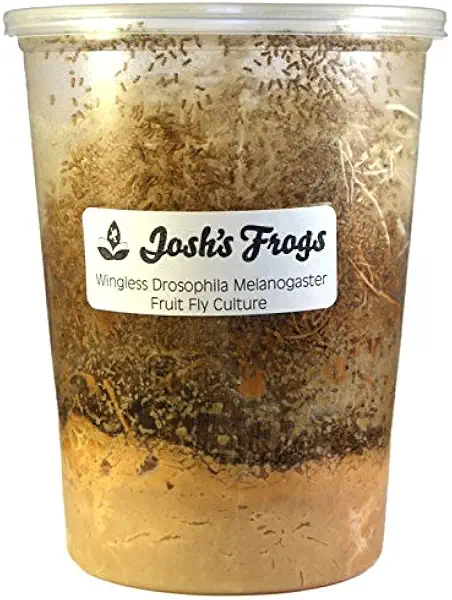Are you curious about what to feed your Jumping Spider? Are you hoping to make its diet more nutritionally balanced?
If so, this guide will outline the basics of Jumping Spider food, including what to buy, how and when to feed it, and common mistakes to avoid.
Read on to find out everything you need to know about food for your pet Jumping Spider.
Table Of Contents:
ToggleWhat Do Jumping Spiders Eat?
In the wild, Jumping Spiders are natural hunters, predating on insects and other small spiders.
They can also feed on crustaceans like isopods, springtails, or small millipedes, on top of the occasional wasp or bee.
Due to the size of food they can catch, they usually stick to insects to feed themselves.
Jumping Spiders have also been known to scavenge for food, consuming leftover insect parts or pieces of fruit.
It’s not uncommon for them to enjoy nectar and flower petals.
Their diet is highly diversified and balanced, meaning they’re happy to explore new food sources if the opportunity arises.
Create the perfect home for your arachnid with our Customizable Spider Enclosure Kits, designed to meet all their habitat needs.
Buy Jumping Spider Food
If you’re looking to buy food for your Jumping Spider, the best place to start is a pet supply store.
Here, you will find a wide range of food specifically designed with tiny carnivores in mind.
You can also find comprehensive food packs with everything from small insects to dried food mixed together.
Be sure to purchase the food in an air-tight container to keep it fresh and free from contaminants.
If you’re buying live food, look for crickets, fruit flies, and waxworms, which these spiders can eat.
For a healthier diet, try buying dried food as well as live food.
When To Feed A Jumping Spider
Jumping Spiders should be fed once a day, ideally at the same time every day.
You should create a routine that works for you, as consistency is key in helping your Jumping Spider feel safe and secure.
For example, you may choose to feed your Jumping Spider food first thing in the morning, or at night when it is most active.
Common Mistakes
One of the most common mistakes made when feeding a Jumping Spider is overfeeding.
While it is important to ensure that your Jumping Spider is getting enough nutrition, too much food can lead to digestive problems, stunted growth, or even death.
It is best to err on the side of caution and provide enough food to sustain your Jumping Spider without causing it to pile up.
Another common mistake is feeding the wrong type of food.
Jumping Spiders are carnivorous and need to be given live prey like crickets, small flies, moths, or beetles.
Trying to only feed your Jumping Spider something like fruit, vegetables, or grains, will not be nutritious enough, and can lead to malnutrition.
Conclusion
Now that you know all the basics about Jumping Spider food, you can confidently provide your pet with a nutritious and well-balanced diet.
Whether you’ve bought prepared food or created your custom DIY blend, properly feeding your pet is essential to its health and vitality.
With careful feeding and regular observation, you can ensure that your Jumping Spider thrives and enjoys a long, happy life!
Create the ideal habitat for your arachnids with our species-specific soil mixes and Spider Enclosure Kits. These products provide everything you need for a thriving spider habitat.
Frequently Asked Questions
Jumping spiders are known to have high metabolisms, and therefore, need to be fed more frequently than other spider species.
They should be fed at least once or twice a week, depending on their age and size.
Jumping spiders are primarily insectivores, and do not typically eat fruit or other plant matter.
Feeding them fruit may not provide them with the necessary nutrients they require for their growth and development.
To feed a jumping spider fruit flies, place the fruit flies in a small container with air holes and gently introduce the spider to the container.
The spider will usually hunt and capture the fruit flies on its own.
The number of fruit flies to feed a jumping spider depends on the spider’s size and age.
As a general rule, you can give them around 2-3 fruit flies per feeding, but it’s best to observe how much the spider eats and adjust accordingly.
Overfeeding can lead to obesity and other health issues.
There could be several reasons why a jumping spider is not eating fruit flies.
One possibility is that the spider is not hungry or is stressed, and may need some time to adjust to its new environment.
It’s also possible that the fruit flies are not alive or healthy, and therefore, are not a suitable prey item for the spider.
Jumping spiders do not require sugar water or any other form of liquid besides water.
Feeding them sugar water may not provide them with the necessary nutrients they require for their growth and development, and could potentially harm them.
Yes, tap water can be used for jumping spiders as long as it is free from any harmful chemicals and has been allowed to reach room temperature before being offered to the spider.
Honey is not a suitable food for jumping spiders as it can be too sticky and difficult for them to consume, and it can also attract other pests or insects that may harm the spider.




